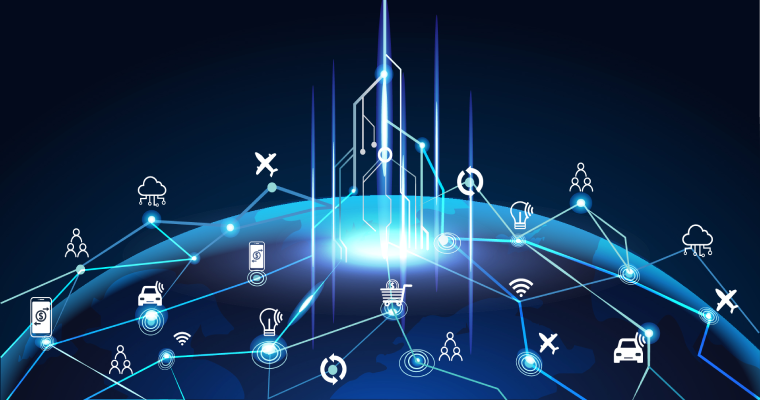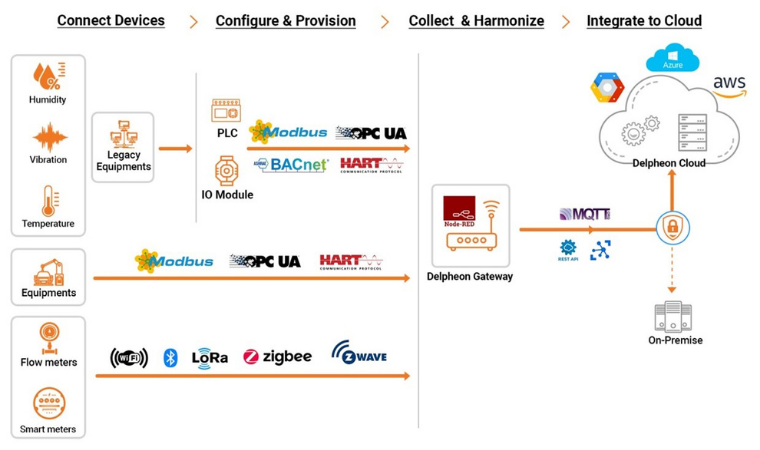

Today we are living in an environment of data and connectivity. Literally every device in this world can be connected to the internet via the technology called IoT. Devices are instrumented with sensors, which effectively identify, measure, and dispatch data in different formats and frequency. As more and more sensors get deployed, we are witnessing an explosion in data volume. Advancement of IoT solution technologies makes it easy to process the huge volume of data generated and make sense out of them. Different devices connected over these sophisticated systems are capable of real-time monitoring that generates valuable insights that save energy, money, and time.
An IoT environment consists of mechanisms for data collection, data aggregation and data analytics. The collected data is processed and analyzed to generate dashboards, reports, and alerts. This process of making sense out of data involves different steps using different technologies and computing techniques. Major steps involved are discussed below:
Gathering of data is the most important first steps in the data value chain. There are multiple types of Sensors available today that enables collection of a variety of data in an IoT environment. These sensors measure the different conditions of physical things on a time scale. Sensors on noticing a change in data, or at defined intervals, gather and transmit the data in real-time. These sensors are connected to an edge device, which collects and harmonize the data. The edge device collates and prepares the data for storage and forwarding to the cloud servers. The data along with its metadata will be transmitted to the server for storage and further processing. The following figure illustrates the data collection and aggregation features.

In IoT development environments, devices and sensors are connected to the edge gateway. The devices and sensors are to be configured and provisioned at the gateway to uniquely identify each data source, recognize the data - what data (temperature, pressure, vibration etc.), data type, format, units, and source so on. Edge Gateways provides web based UI for performing the configuration and provisioning of devices and sensors connected. This allows the edge gateways to uniquely recognize the data and transmit to the application servers at the cloud or on-premise services. The time-stamped data allows it to be processed in batches or in near real-time.
Edge gateways help in transforming data from the devices. The edge gateway collates the data received from each devices or sensors. These data could be collected at different frequency, format and could be using different interface protocols. Gateways harmonize these different factors and prepare the data for transmission to the server. Edge gateways will use multiple protocols to connect with the Cloud solutions and transmit data like MQTT, IoT hub, Kafka.
It is important to store and transmit data securely. This would help in retaining its privacy and integrity. Different encryption technologies and security protocols are used in ensuring security of data. Access to the data outside of the network is prevented through multi-level authentication techniques. The data is handled and interpreted by only authorized user roles and profiles, enforced at the application levels.
The cloud server receives data from all connected gateways and sensors. The data packets received are stored in a database designed for the IoT application. The historian databases enhance the ability to perform predictive analytics on the data.
It is necessary to evaluate IoT engineering system data to ensure its proper utilization. Applications process and analyze the data to extract different insights and information from the data received. Different anomaly conditions are identified and defined, so that the moment data crosses the threshold, automated alerts can be generated and distributed to authorized people. This enables real-time remote monitoring of operations and processes. The data is used to compute key performance indicators (KPIs) so that appropriate dashboards and reports are generated, enabling data driven decision making across the organization.
Advanced analytical engines using AI and ML techniques are applied on the data to predict equipment failures, prescribe outcomes etc. preventing unscheduled equipment failures leading to improved bottom-line for the company. Analyzing IoT data is imperative to successful large-scale management. Robust IoT systems use data analytics for the prediction of trends and demands. Accordingly, the businesses deploy policies and processes that allow making necessary adjustments easy.